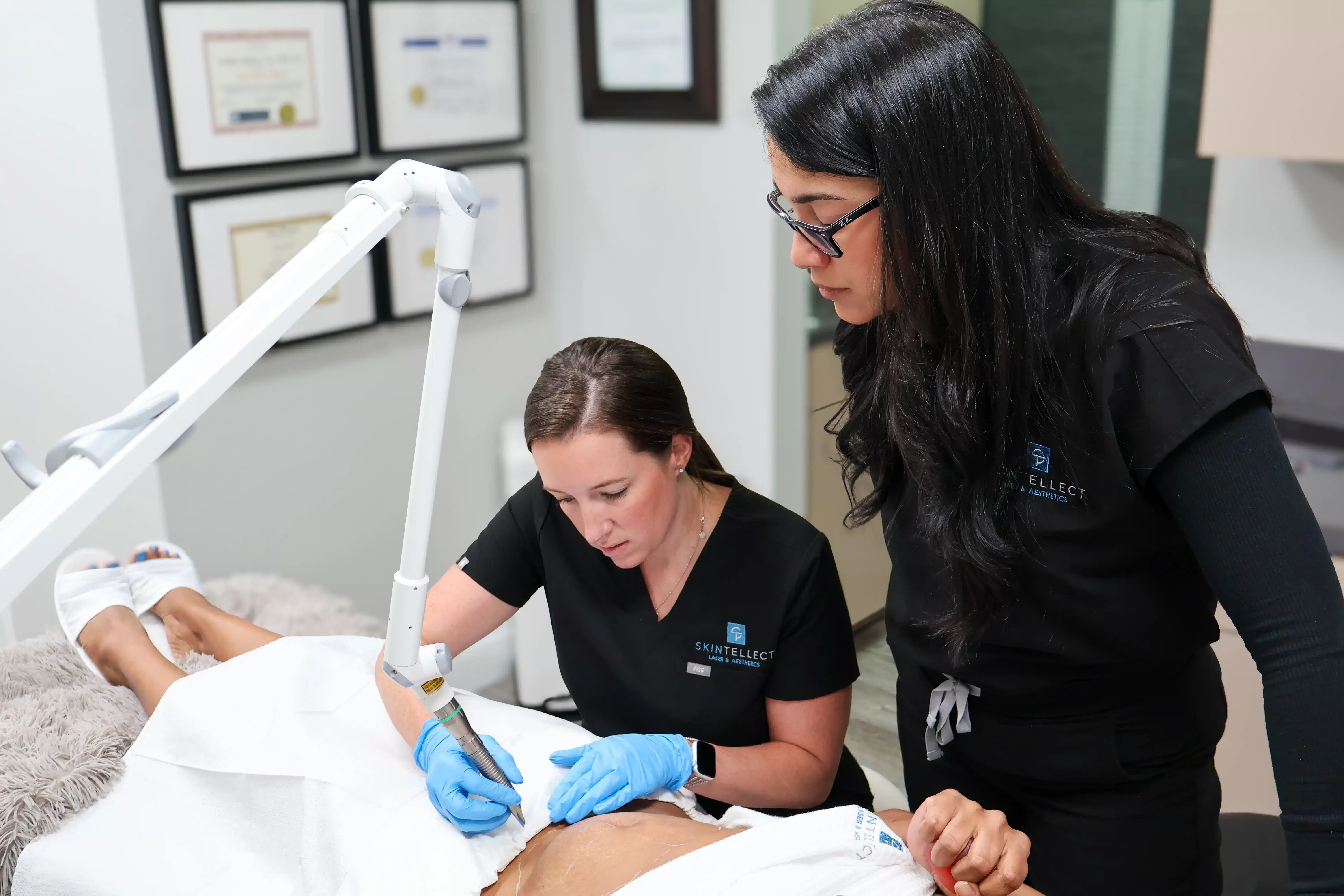Reduce color and texture of scars and stretch marks, dark or light, new or old at Skintellect Tampa

Laser scar and stretch mark removal works by using concentrated beams of light to target and break down scar tissue. The laser stimulates the body’s natural healing process, promoting collagen and elastin production, which helps to smooth and rejuvenate the skin, reducing the appearance of scars and stretch marks over time. to target and break down unwanted pigmentation, such as dark spots, melasma, acne scars, sun damage, and hyperpigmentation, allowing the body to naturally eliminate the pigment for a more even complexion.
Yes, laser treatments for scars and stretch marks are safe when performed by our experienced and certified professionals. At Skintellect Laser & Aesthetics, we use advanced Fotona Laser technology that ensures minimal side effects and downtime, offering an effective and non-invasive approach to skin rejuvenation.
The number of sessions required varies depending on the severity of your scars or stretch marks and individual skin characteristics. Typically, patients achieve optimal results after 3-6 sessions, spaced 6-8 weeks apart. Your provider will create a personalized treatment plan during your consultation.
Most patients describe the sensation as mild discomfort, similar to a light snapping feeling on the skin or a mild sunburn. We do apply a topical numbing cream before the treatment to enhance comfort.
Laser scar and stretch mark removal typically has minimal downtime. You may experience some redness, swelling, peeling and flaking, or minor irritation following the treatment, but most patients can resume their normal activities shortly after. It is important to avoid sun exposure for 3-4 weeks after your treatment.
Yes, the results of laser treatments for scars and stretch marks are permanent. However, new scars or stretch marks can develop over time due to factors such as weight fluctuations, pregnancy, or surgery. Your provider will go over expected results during your consultation.
Results vary from person to person, but most patients start noticing improvements within a few weeks after the first session. Optimal results are typically seen after completing the recommended treatment plan.
Monday & Tuesday: 9:00 AM – 6:00 PM
Wednesday – Friday: 9:00 AM – 5:00 PM
Saturdays: By Appointment Only
(Hablamos Español)
Copyright 2024 © Skintellect

Unlock a world of beauty and self-care. Experience personalized treatments, luxurious benefits, and a community dedicated to your glow!


Welcome to Skintellect! Fill out our new patient form to receive 10% off services or packages at your first visit!
